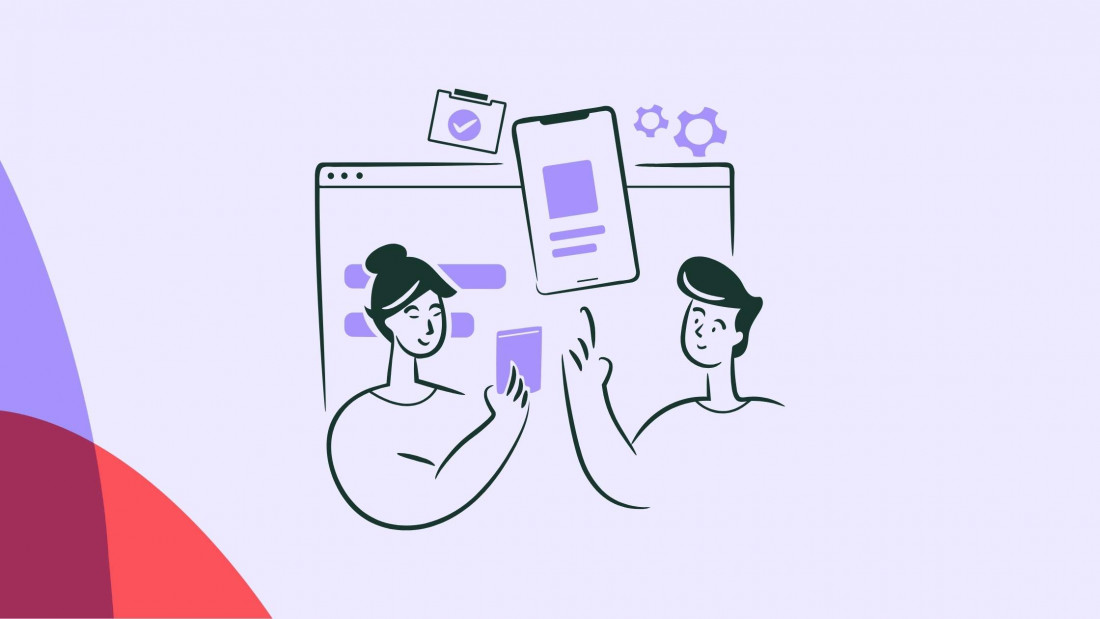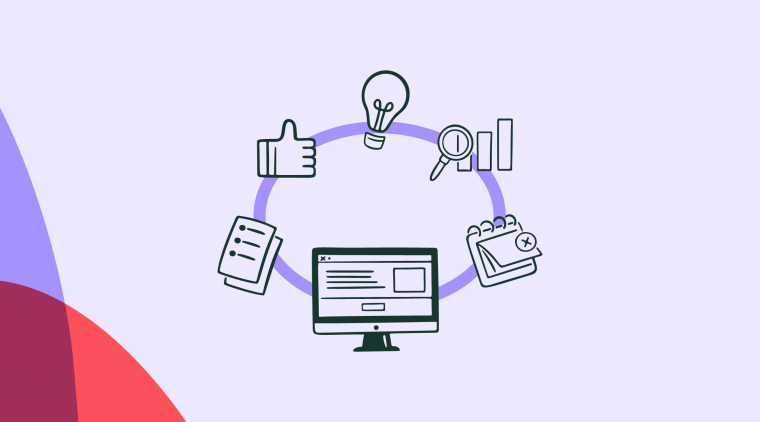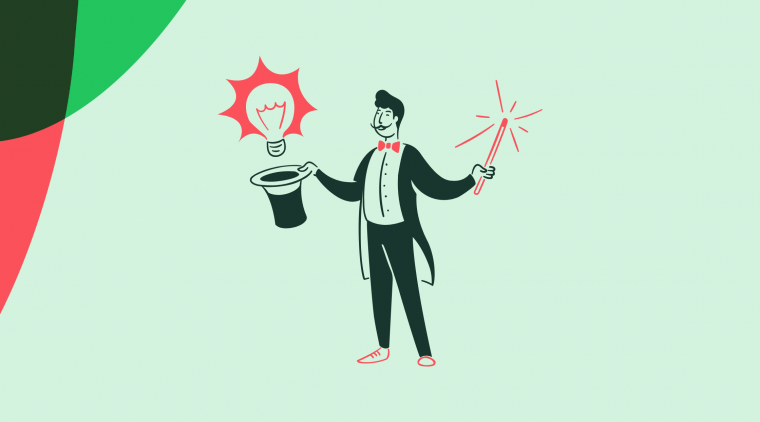Let’s say you buy a brand-new car. You take it for a spin and decide to turn the radio on to check out the sound system. It’s pretty decent, and you like your car that little bit more. Months down the road (get it?), you’re messing around with the console and feel your chair start to warm up—your car has heaters in each seat! “Nice,” you think. “I wish I’d found this sooner.”
That’s exactly how your users feel when they discover game-changing features they never realized existed before, and it’s your responsibility to ensure finding them is not left up to chance.
In this article, you’ll learn about getting a higher number of users engaged with more than your core product features. We’ll also look at ensuring they keep using them, and how you can measure the success of your advanced feature adoption efforts long-term.
Feature adoption refers to how users discover your product’s functionality
Advanced feature adoption focuses on familiarizing users with your more complex features, developing a habit of using them, and getting to the full potential of your product
The feature adoption funnel includes four steps: Exposed, Activated, Used, and Used again
You can measure feature adoption by tracking your adoption rate, time-to-first key action, and average time spent using the feature
The best ways to increase advanced feature adoption is by personalized onboarding flows, contextual in-app guidance, and in-product prompts that help users immediately understand the benefits
What is feature adoption?
Feature adoption refers to how users discover and use the features available to them within your product. It’s a process all users undergo when getting to grips with a new product.
The SaaS subscription-based pricing model has made feature adoption an essential consideration for businesses. Why? Because the fewer features your users use, the less value they perceive your product to provide.
Let’s put it this way—which sounds better to you: paying $199/month for three features you know and love or paying $199/month for ten features you will actually use?
Feature adoption enables users to get more value from your product by getting beyond the core usage as they advance through your product.
What is advanced feature adoption?
Now, there are levels of complexity when it comes to feature adoption. Your users will likely start using your core features from the get-go, but it’s the advanced features you want to focus on promoting.
Advanced feature adoption focuses on getting your users comfortable with the features that don’t often take the limelight but can still be greatly beneficial to users—if they know where to find them and how to use them.
Both new features and existing features often remain undiscovered—especially those that aren’t included in your core feature offerings. These are typically advanced features—very useful for their intended application, but not as apparent to users at first glance.
It’s time to shine a light on your advanced features and how they add value to your user’s experience with your product. Next up, you’ll discover how to track and measure feature adoption, as well as your best bet for getting users engaged.
Track advanced feature adoption through the funnel
Just like with many concepts in the SaaS world, feature adoption has a funnel. That funnel can be applied to advanced feature adoption, too.
The feature adoption funnel was developed by Justin Butlion, Founder of ProjectBI, to effectively track the adoption rates.
The funnel includes four steps:
Exposed: This looks at the number of users who have seen the feature or are aware of its existence
Activated: This one’s only applicable if the feature in question requires activation—they often don’t need an activation point. If that’s the case, skip this step.
Used: This is the number of users that have used the feature once.
Used again: You guessed it—this is the number of users who go on to use the feature again.
This might seem like a four-step funnel, but it’s really not. Once you’re at the “used again” step, you want to keep asking the question of usage over and over again. View the question not as “Did they use the feature again?”, but more as “Did they use the feature again since the last time?”.
Getting users to engage with a feature twice isn’t a job done. You need to continue checking months down the line for an accurate understanding of feature adoption—especially when it comes to advanced features.
Advanced features aren’t as sticky as core ones, which is a feature adoption lingo for “they’re less likely to get regular usage”. This is due to a number of reasons:
Advanced features don’t get as much exposure—think out of sight, out of mind
They can be trickier to get to grips with—pushing users to give up
They can have pretty niche uses—some users may not instantly see their value
Luckily for you, we’ve got a whole section on overcoming these hurdles further down. For now, let’s turn our focus back to the funnel and why it’s useful.
The feature adoption funnel enables you to gain insights on feature adoption that can help with prioritizing features when it comes to exposure, onboarding, and more.
James Butlion shares this example of how to use the funnel for a time frame of new (feature) users acquired in one month.

(Source)
By calculating the number of users that pass through the four stages of the funnel, you can identify issues with the process and better understand the user journey.
In the example above, we can see a massive drop-off from feature activation to first use. This could point toward the feature being too difficult to use—meaning you might want to revisit the feature onboarding process.
Tracking feature adoption is insightful for product managers and teams but can often lead to more questions. If it answers what you’re after, you’ll want to consider how to measure feature adoption.
How to measure feature adoption: 3 key metrics
There are lots of feature adoption metrics and, here, we’ll focus on the top three.
1. Feature adoption rate
You can measure feature adoption with the same formula you use for product adoption, only adjusted to consider feature users.

What constitutes a user of a feature really depends on the feature in question. Is it someone who’s clicked on the feature? Is it someone who’s performed a key action in the feature? Is it someone who’s used it more than once?
Feature adoption looks different in every product, but this formula is a go-to for calculating it in yours.
2. Time-to-first key action
This is a key metric when looking at feature adoption, as it indicates how quickly users can perform the key action. The key action is a step taken within a feature that signifies that the user has discovered how to use it.
A slow time-to-first-action likely signifies an issue with your feature onboarding or functionality. Ideally, you want users' time-to-value to be as short as possible.
To iterate on this, you could create feature-specific Tours with Chameleon, and leverage the bi-directional integrations between Chameleon and product analytics tools like Heap, Mixpanel, or Amplitude, to group the tour performance data and understand user behavior on a deeper level.
This could help you tie your Tour performance data to your key activation milestones, and perform a cohort analysis to then compare the behavior of those who successfully completed the first key actions to those who haven’t, depending on how many steps they’ve previously completed.
It would then be easy to look at the performance data and identify underperforming feature onboarding flows you want to focus on and improve. Here's an example of what you could see in a Chamaleon Dashboard.
3. Average time spent using the feature
This one’s pretty self-explanatory, you want to measure the amount of time users spend on the feature in question. This can provide really useful insights into change management and feature adoption.
For example, if you measure time spent using the feature for users who failed to complete the key action—you can see how long it takes users to give up trying. This can then help you improve the feature and its functionality to help ensure adoption is speedy.
For the best results, combine adoption and retention rates
Remember what we said earlier about the four-step funnel that’s not really a four-step funnel? We’re revisiting it here.
To keep answering the “used again” question, you want to combine user adoption and user retention rates. Measuring both adoption and retention gives you deeper insights by enabling you to measure how many new users are still using the feature weeks, months, or even years down the line.
Plus, it’s not just us saying it. Google’s HEART framework highlights the importance of measuring these two metrics in unison. HEART stands for Happiness, Engagement, Adoption, Retention, and Task success, and Google has developed it for tracking user-centered metrics in web apps.
Google specifically advises combining adoption and retention metrics “to provide stronger insight into counts of the number of unique users in a given period, addressing the problem of distinguishing new users from existing users.”
How to increase the adoption rate for your advanced features
It’s all well and good telling you how important advanced feature adoption is for product success, but what use would it be if we didn’t tell you how. Here are some of our top guidelines on how to engage users with advanced features.
Use in-app messaging to grab your user’s attention
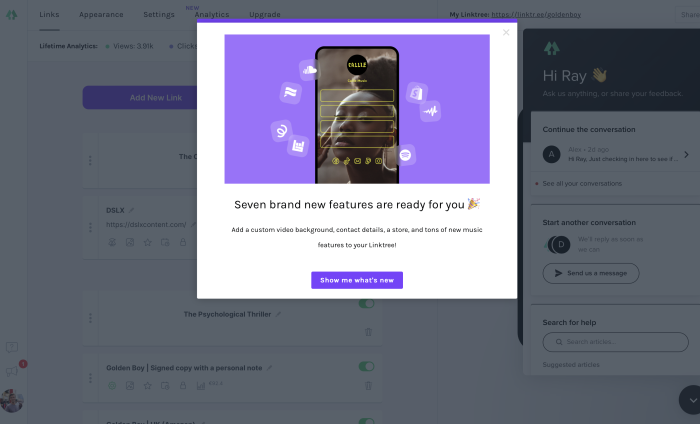
(Source)
In-app messages are delivered to your users while they’re using your product. These could be in form of tooltips, checklists, product tours, slide-outs, modals, banners, or other in-product widgets.
These in-product widgets give users contextual information on your product and how they can use it, as we see in the above example from Linktree—announcing seven new features in-app with a clear and concise modal.
In-app messaging can be used to encourage users to engage with the advanced features they’ve not yet taken a closer look at. It not only enables you to highlight the new feature but also guides users on how to use it via tours, walkthroughs, and tooltips.
You can deploy in-app notifications at any time during the onboarding experience—which starts when the user signs up for your product and ends, well… never.
Tailor feature onboarding flows to specific user segments
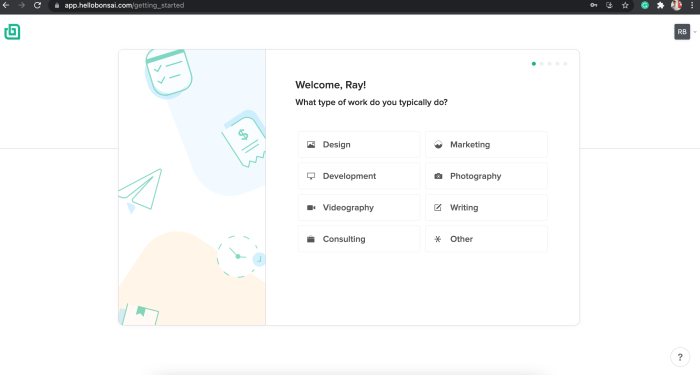
(Source)
A strong onboarding flow is an essential part of your product and brand. It’s the helping hand you guide users with to get them accustomed to your software.
Onboarding experiences are often created with a one-size-fits-all approach—but the best onboarding flows are personalized, created with specific users in mind.
Segmenting your user base for the onboarding to advanced features enables you to provide an experience that’s unique to their wants and needs.
This way, you can walk users through the relevant features they’re most likely to enjoy (and use) in your product. This also includes your features that may not make the cut when creating one single onboarding flow for all users.
For example, let’s say your product provides project management software to be used across an organization. The finance team will use it differently from the marketing team, who’ll use it differently from the product team, and so on.
A segmented onboarding flow uses the information your users have provided during sign-up or their first steps in your product—such as the user’s role within their organization—to highlight features based on the user in question. Using our example, the finance team could be shown advanced features relating to invoicing and data visualization.
In other words, segmented onboarding facilitates feature discovery from the get-go.
Gather feedback from users on the feature experience
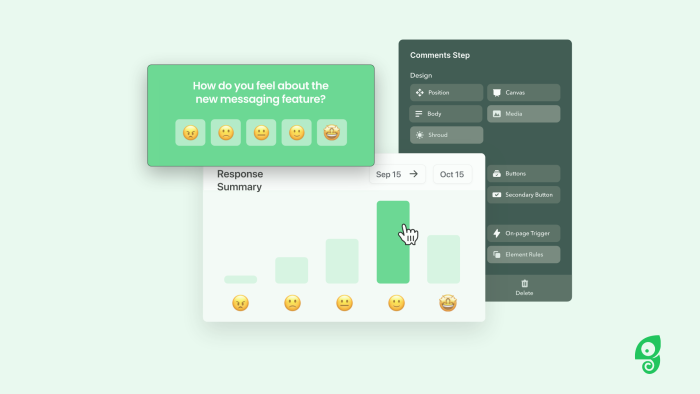
Our final tip is to continually collect user feedback to optimize the feature adoption experience. This enables you to learn from your users and create a better product experience that guides more users to your advanced features.
For this purpose, you can use Microsurveys and easily configure them for each specific case. In the example above, you see a summary of what configuration, design, and response data could look like for a survey created with Chameleon.
You want to gather contextual user feedback on the advanced feature onboarding process to ensure you reach users when the experience is fresh. Microsurveys enable you to collect feedback from users as they’re engaging with your product.
For example, as shown above, you could create a survey that appears in relation to a new or updated messaging feature. With a single question “How do you feel about this feature”, you could collect invaluable feedback on the spot and integrate insights into further improvements and developments.
Increase advanced feature adoption to nurture power users
You’ve put ample time and effort into building a powerful product—now it’s time to ensure your customers know how to use it to its full potential.
Improvements to your advanced feature onboarding process ensure your users are able to discover the features that are most valuable to them. It’s also a great opportunity to turn your active users into power users by highlighting product and feature value.
Improve your advanced feature adoption 💪
Help your users quickly discover value in features they didn't even know existed.

